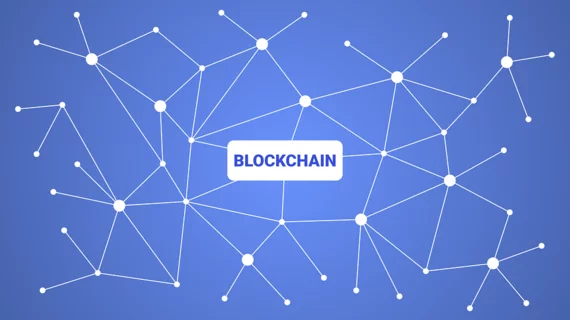3 key ways blockchain could change radiology forever
Blockchain technology is gaining popularity throughout the world and could potentially have a significant impact on the medical imaging industry, according to a new analysis published in the Journal of Digital Imaging.
The study’s authors began with a quick review of what blockchain is and how it works.
“Blockchain technology is a distributed transaction database in which interconnected computers—nodes of a peer-to-peer network—cooperate as a system to store a growing list of records encrypted as a single unit, or block, and then chained together,” wrote Francesco Verde, department of advanced biomedical sciences at the University of Naples in Italy, and colleagues. “Blocks consist of data containing the details of transactions between users. A transaction is basically a string of data and it can contain any kind of information.”
The promise for healthcare, the research team explained, is that this technology can be used to store and manage important medical data “in a secure fashion.” Developments with blockchain technology come as electronic health records (EHRs) are growing more and more important in today’s healthcare landscape, and the authors noted that EHRs are “the main field of healthcare research promoting blockchain implementation” at this time.
But what does blockchain technology mean for radiologists? These are three potential ways blockchain could impact radiology moving forward:
1. Empowering patients
Thanks to advances in blockchain, researchers have speculated, patients may one day truly “own their imaging data and control healthcare provider access privileges.” It would put an end to handing patients CDs full of images, make accessing one’s images a breeze and make all data much more secure.
Also, the authors added, “it is possible to hypothesize that a future implementation could be the creation of more accessible records of radiation exposure for both patients and healthcare providers.”
2. Improve education
Blockchain technology could make an impact on radiology trainees as well, helping instructors monitor the progress of their students and track their development over time. Verde et al. added that it could also be used for the opposite purpose: assessing “faculty member competencies.”
3. Lead to better research
Creating massive databases of imaging data is crucial for the development of radiomics and AI applications, the authors observed, and it’s an especially difficult task for researchers.
“Blockchain could be used to solve some of these challenges,” they wrote “Firstly, this technology could provide a reliable method for management of patient consent to image sharing between institutions and a way to guarantee the possibility of retraction of such consent at any time. This knowledge, in turn, may aid in obtaining patient acceptance as they would rightly empowered in the management of personal data.”
Blockchain could also help such databases become safe and secure, the team added.
“Although blockchain is in its infancy, we should become aware of this ground-breaking technology and of its many potential applications in healthcare, including medical data storage, distribution, and protection,” the authors wrote.

